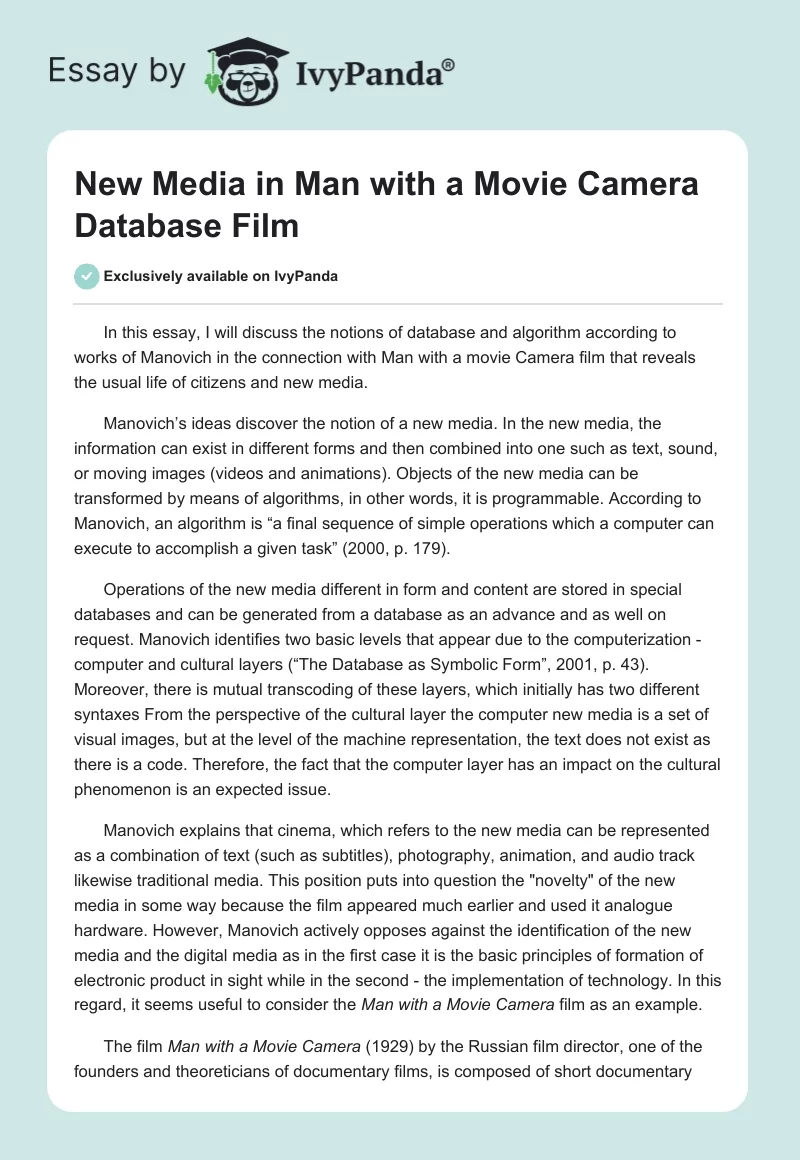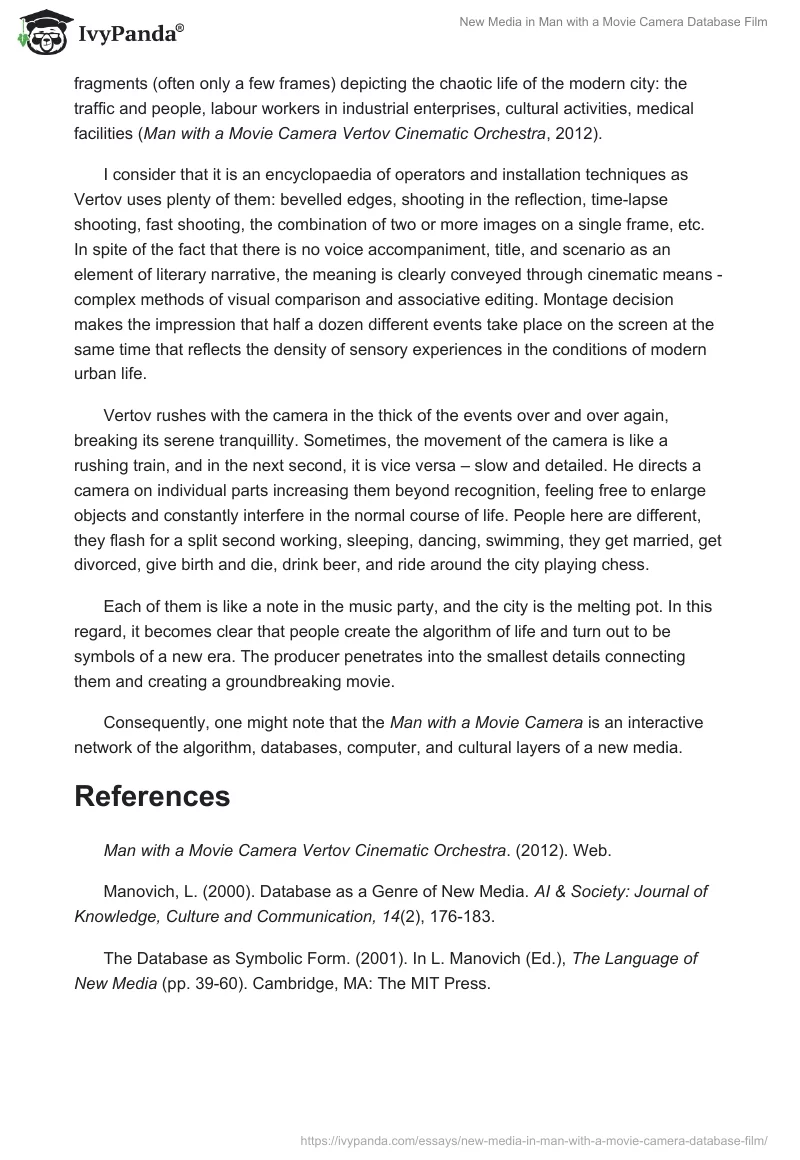In this essay, I will discuss the notions of database and algorithm according to works of Manovich in the connection with Man with a movie Camera film that reveals the usual life of citizens and new media.
Manovich’s ideas discover the notion of a new media. In the new media, the information can exist in different forms and then combined into one such as text, sound, or moving images (videos and animations). Objects of the new media can be transformed by means of algorithms, in other words, it is programmable. According to Manovich, an algorithm is “a final sequence of simple operations which a computer can execute to accomplish a given task” (2000, p. 179).
Operations of the new media different in form and content are stored in special databases and can be generated from a database as an advance and as well on request. Manovich identifies two basic levels that appear due to the computerization – computer and cultural layers (“The Database as Symbolic Form”, 2001, p. 43). Moreover, there is mutual transcoding of these layers, which initially has two different syntaxes From the perspective of the cultural layer the computer new media is a set of visual images, but at the level of the machine representation, the text does not exist as there is a code. Therefore, the fact that the computer layer has an impact on the cultural phenomenon is an expected issue.
Manovich explains that cinema, which refers to the new media can be represented as a combination of text (such as subtitles), photography, animation, and audio track likewise traditional media. This position puts into question the “novelty” of the new media in some way because the film appeared much earlier and used it analogue hardware. However, Manovich actively opposes against the identification of the new media and the digital media as in the first case it is the basic principles of formation of electronic product in sight while in the second – the implementation of technology. In this regard, it seems useful to consider the Man with a Movie Camera film as an example.
The film Man with a Movie Camera (1929) by the Russian film director, one of the founders and theoreticians of documentary films, is composed of short documentary fragments (often only a few frames) depicting the chaotic life of the modern city: the traffic and people, labour workers in industrial enterprises, cultural activities, medical facilities (Man with a Movie Camera Vertov Cinematic Orchestra, 2012).
I consider that it is an encyclopaedia of operators and installation techniques as Vertov uses plenty of them: bevelled edges, shooting in the reflection, time-lapse shooting, fast shooting, the combination of two or more images on a single frame, etc. In spite of the fact that there is no voice accompaniment, title, and scenario as an element of literary narrative, the meaning is clearly conveyed through cinematic means – complex methods of visual comparison and associative editing. Montage decision makes the impression that half a dozen different events take place on the screen at the same time that reflects the density of sensory experiences in the conditions of modern urban life.
Vertov rushes with the camera in the thick of the events over and over again, breaking its serene tranquillity. Sometimes, the movement of the camera is like a rushing train, and in the next second, it is vice versa – slow and detailed. He directs a camera on individual parts increasing them beyond recognition, feeling free to enlarge objects and constantly interfere in the normal course of life. People here are different, they flash for a split second working, sleeping, dancing, swimming, they get married, get divorced, give birth and die, drink beer, and ride around the city playing chess.
Each of them is like a note in the music party, and the city is the melting pot. In this regard, it becomes clear that people create the algorithm of life and turn out to be symbols of a new era. The producer penetrates into the smallest details connecting them and creating a groundbreaking movie.
Consequently, one might note that the Man with a Movie Camera is an interactive network of the algorithm, databases, computer, and cultural layers of a new media.
References
Man with a Movie Camera Vertov Cinematic Orchestra. (2012). Web.
Manovich, L. (2000). Database as a Genre of New Media. AI & Society: Journal of Knowledge, Culture and Communication, 14(2), 176-183.
The Database as Symbolic Form. (2001). In L. Manovich (Ed.), The Language of New Media (pp. 39-60). Cambridge, MA: The MIT Press.


